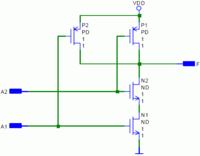ojha
Newbie level 3

we say that we require Ioff to be as low as possible and Ion to be as high as possible.... wouldn't then it be wise to short source and drain... so that we get conduction only when there is gate voltage, otherwise no current.. we can have Ioff as zero... why don't we do this in digital design...



